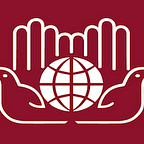The Importance of Reintegration for Child Soldiers
The international community increasingly acknowledges the recruitment and use of children under the age of 18 in armed conflict as a grave violation of human rights. Indeed, normative and legal statutes, such as the Convention on the Rights of the Child and multiple UN Security Council resolutions, condemn the abuse of children in conflict; the Rome Statute establishes that using children under 15 in armed forces and groups is a war crime. Despite these particular circumstances, child demobilization is not the same process as the demobilization of adult ex-combatants. Child demobilization takes place even before conflict ends, being dealt with by multiple actors outside of broader political negotiations.
Children join armed groups for many reasons, some of them voluntary and others not. Many are abducted, while others face community or parental pressure, feel the need for security and protection, or lack other options. The distinction between child and adult may vary depending on social, economic, or cultural systems. For a demobilization effort to be successful, it must take into consideration motivations for joining, the local and national context and perception of the conflict, and the role an individual has in an armed group.
Demobilizing and reintegrating youth into the community is essential. Doing so reduces the risk of these youth falling back into previous ways and posing a security threat to those around them. To begin this process, recognizing that children also have the capacity for resiliency and represent an opportunity for an integrated peace effort is crucial. Youth-oriented programming “should have as its ultimate objective [in] the enabling of children to move forward with their lives as peaceful and productive members of society, integrated into the community and, where possible, reconciled with their family.”
Prevention is a crucial step in the ongoing demobilization of children; it occurs throughout the conflict and continues after adult DDR programs end. Community-level advocacy and public information campaigns spread awareness about child protection laws and the dangers of recruitment. National-level advocacy strengthens existing policies or promotes their implementation. Other aspects of prevention include identifying vulnerable children, supporting education, and providing access to livelihood- and income-generating activities.
The process of disarmament and demobilization for children is separate from that of adult combatants, to break ties with the military hierarchy. This separation happens symbolically, where children remove their military clothes and receive civilian identification papers. Because girls are most likely to be abused and stigmatized when reentering civil society, they have specific needs within demobilization camps. Some may have been taken as ‘wives’ by male ex-combatants and face additional difficulties with reintegration. Medical and psychosocial care for girls who survived sexual violence is crucial. Family tracing and reunification is another main goal of this stage of the process; it often requires mediation between family members and the provision of material and social assistance.
Reintegration of children, as with adult DDR, is ongoing and based at the community level. Since conflict affects more than just those who were combatants, child reintegration includes all children. Psychosocial support activities to develop self-esteem, decision-making skills, and resilience can help children find a sense of solidarity and usefulness. Communities must also be prepared to welcome ex-combatants before they return; children often face shame and stigma after conflict. Traditional rituals of cleansing and reconciliation may help with this process, as well as awareness and truth-telling initiatives. In collaboration with the government, NGOs, UN agencies, and communities also engage in follow-ups to track the progress and effectiveness of these programs.
When determining the success of a child’s reintegration, education is a decisive factor. These factors are affected by how each child’s needs may vary widely based on age, the role they had within an armed group, and their family situation. The ability to choose between program options — formal education, non-formal education, and vocational training — can help children adapt to their new situation. For youth who opt into vocational training, the work should respond to a specific need in the market since the goal of reintegration is for the youth to find a practical job. Along with job training and education, these programs may offer activities such as theater, music, arts, and sports, to provide places for socialization and community off the streets.
Overall, successful reintegration of youth treats them as partners instead of beneficiaries. With the full participation of youth, programs take into consideration what these individuals want to do with their lives and build on the skills they may have developed during conflict. They must be shown respect, given valued responsibilities, and encouraged to be independent.
Written By Lydia Henning, Refuge Press Intern, Summer 2019
About the IIHA
The Institute of International Humanitarian Affairs (IIHA) prepares current and future aid workers with the knowledge and skills needed to respond effectively in times of humanitarian crisis and disaster. Our courses are borne of an interdisciplinary curriculum that combines academic theory with the practical experience of seasoned humanitarian professionals. The IIHA also publishes on a wide range of humanitarian topics and regularly hosts a number of events in the New York area, including the annual Humanitarian Blockchain Summit and Design for Humanity Summit.
For media inquiries, please contact: Camille Giacovas, Communications & Research Officer, IIHA cgiacovas@fordham.edu
